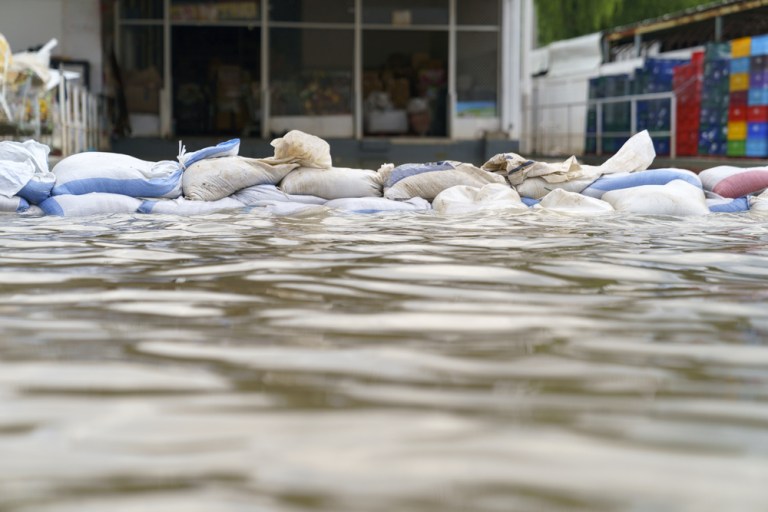
When disaster strikes, relief workers mobilize. But rebuilding wrecked homes and opening shelters takes time and involves unexpected expenses. Carrying cash is risky, and getting reimbursed for out-of-pocket purchases takes time. In the inaugural Workforce Spend Management Tracker™, Erik Dyson, CEO of the nonprofit All Hands and Hearts, discusses the benefits of carrying corporate payment cards in chaotic environments and importance of flexible spend management controls — all without much notice.
Natural disasters shook the world in 2017. A magnitude 7.1 earthquake struck Mexico, landslides ravaged Sierra Leone, Hurricanes Irma and Harvey devastated the U.S. and Hurricane Maria shook Puerto Rico — meaning the impacts were widely felt. In fact, nearly 8 percent of the U.S. population was affected by natural disasters last year, according to research from the Federal Emergency Management Agency (FEMA).
Rushing to survivors’ aid requires brave volunteers and workers, effective mobilization and, of course, money for supplies. More than $7.2 billion was spent on disaster assistance in the U.S. alone, funding millions of liters of water, meals, gallons of fuel and other dire needs.
But rescue workers and volunteers who arrive in the immediate aftermath of a natural disaster often find themselves in destabilized environments in which it can be difficult to find — let alone pay for — supplies, and carrying cash isn’t always the safest choice. Smarter workforce management tools with flexible controls can relieve workers of this dilemma, offering organizations a safer way of disbursing disaster relief funds.
Erik Dyson, co-founder of natural disaster response nonprofit All Hands and Hearts– Smart Response, and Lori Sylvia, its finance manager, recently spoke with PYMNTS about relief workers’ payment pain points, how card-based solutions have helped to safely disburse funds and the ways the offering has relieved both budget planning and financial woes.
Faster Payments for Disaster Relief
All Hands operates around the globe, with operations spread across Nepal, Mexico, the U.S. and the Dominican Republic, among other locations. It manages approximately 150 temporary and permanent staff members and 8,500 volunteers worldwide. For those workers, stepping into an emergency area means getting operations up and running as quickly as possible, without waiting for wired funds to clear or for a corporate card to be issued in their names.
Different response stages require specific payment methods, Dyson said, and disbursement typically follows a cycle. Because carrying large amounts of cash is risky in locations that are filled with desperate people, All Hands works to quickly migrate workers to using a preloaded and reloadable payment card as soon as possible — once an impacted region’s electricity and ATM network are back online, for example.
The non-profit uses generic payment cards that do not carry a specific relief worker’s name, which can be provided more quickly than individually designated corporate credit cards. Workers are required to use the cards once they arrive, allowing the organization to access funds without having to take the money from its budget until the payment date arrives.
“[When we switch to credit cards], we now have the ability to spend the money and pay at the end of the month — [and] we get some corporate benefits from our provider,” Dyson said. “[In addition to the] pure expense tracking point, it’s easier to do it that way. Our evolution after a disaster is cash to PEX [payment card] to credit card.”
Workers make contracts with vendors and pay through wire and ACH if an operation becomes long term, he added.
Managing Emergency Money
The generic payment cards are particularly effective because they are connected to a cloud-based service, enabling remote control and easy money reloading. They can also be mailed quickly and used immediately upon receipt, Sylvia explained. This speed is particularly valuable for organizations that cannot predict when or where they’ll be needed, or how many volunteers will join them and need to be able to make purchases.
“I can mail it instantly to anyone overnight by FedEx, and it’s a fast turnaround,” Sylvia said. “There’s no wait, and they have a spending card in their hands, ready to go.”
The cards provide security against loss or theft, too, as they can immediately and remotely be shut down by non-profit staff from an office or a phone. Administrators can also carefully control how the cards are used, blocking card use with certain vendors, such as liquor stores, for example, or shutting a card off and contacting its holder if they notice a suspicious purchase.
Firmer Planning for the Future
Each time an emergency relief non-profit enters a country or city, it’s essentially setting up a new business on the fly, Dyson explained. Upon arrival, All Hands must figure out where to purchase goods, rent vehicles and estimate related costs.
Reloadable cards allow non-profits to better track spending, which helps with both budget reconciliation and amassing data that can be analyzed to provide future estimates. Closely tracking expenses during the first weeks of an operation enables them to estimate how much they should budget for each future week at that site.
“It allows our teams who do financial planning to really understand our cost structures, so we can accurately predict what it’s going to cost us going forward,” Dyson said.
Natural disasters aren’t going away, but neither are the workers or organizations dedicated to helping recover from them. With new payment solutions that provide for quick access to funds and better budget planning, groups like All Hands and Hearts can expect they’ll be even better prepared next time — with hands, hearts and payments ready to be put to use.